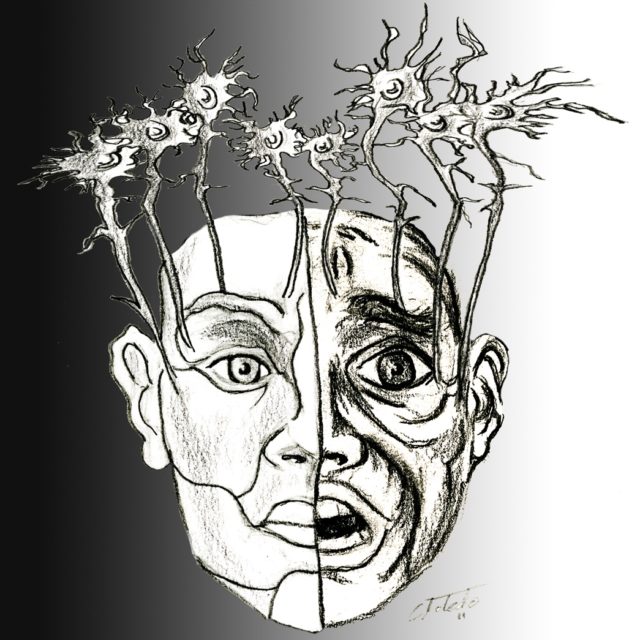
Image Credit: Carlos Toledo and Gunnar Grah, Bernstein Center Freiburg, Germany
Last week, U.S. Attorney General Jeff Sessions made a surprise appearance at the New Hampshire Youth Summit on Opioid Awareness regaling middle and high school audiences with tales about a fabled time when “drug users were not cool.”
“In the 1980s, I was a federal prosecutor,” he said. “It was a terrible time for drugs. Illegal drug use had surged. Cities were filled with heroin addicts. Families broke up, young people dropped out of schools and universities. Crime and violence threatened public safety. The purity of the street heroin and cocaine — and marijuana — was much lower than it is today. But the impact was still enormous.
By describing that era as a time dominated by danger, violence and immorality, and attributing that climate to drug use, Sessions is effectively returning to the rhetoric of the war on drugs.
“There are three main ways to fight back against this problem: prevention, criminal enforcement and treatment. Criminal enforcement is essential to stopping the transnational criminal organizations which ship drugs into our country, and to stop the thugs and gangs who use violence and extortion to move their product … We are going to get rid of them. Of that you can be sure.”
To be sure, this rhetoric is a far cry from a return to war on drugs policy. Given that 60 percent of Americans support legalization of marijuana and eight states have legalized it recreationally, any direct federal action would be met with too much resistance to be effective. Even Sessions admits, “It’s not possible for the federal government, of course, to take over everything the local police used to do in a state that’s legalized it,” he said on The Hugh Hewitt Show.
But while Sessions may not have the resources to go after cannabis consumers, producers and retailers in states where marijuana is legal, he can work to create fissures in the ideological foundation of legalization by way of messaging, chipping away at public opinion and frightening state legislators to the point of eroding their own legalization efforts. Far from fantasy, this strategy is already proving effective right here in Colorado.
Since 2012, the Centennial State has been a leader of decriminalization and regulation. For years the state upheld this position, despite being in conflict with federal law. But the stronghold appears to be weakening.
On March 13, House Bill 1220 passed the Colorado House with broad, bipartisan support. Citing organized crime and drug trafficking, the bill would put new limits on home-grown marijuana to 16 plants per residence for both medical and recreational purposes. This is a drastic cut from the 99 currently allowed under medical law.
Many statements from those in favor of the bill echo the rhetoric of Sessions, citing the need to crack down on criminals and organized crime to keep the street safe from criminals and prevent a federal crackdown. In a statement to the Denver Post, House Majority Leader KC Becker (D-Boulder) said, “I can think of no quicker way to jeopardize Colorado’s billion-dollar industry than to allow our state to become a significant source of marijuana in other states where it isn’t legal.”
Opponent of the bill Jonathan Singer (D-Longmont) told Colorado Public Radio that while action is needed to stymie illegal trade, he fears the bill goes too far, worrying it is a step backwards and a perilous return to a war on drugs mentality, one that also happens to unduly affect medical patients.
Singer is right to be wary of stripping rights away from subpopulations of Colorado in order to protect an industry. The integrity of Amendment 64 lies not in its potential for profit, but in its ability to dismantle systemic discrimination induced by criminal drug laws — in this case, with regard to patients seeking marijuana as medicine. Although it is just as crucial to ending systems of religious, racial and socioeconomic oppression.
To that point, there are growing claims that Colorado’s rise in homelessness is connected to the legalization of marijuana based on the fact that there has been an eight percent rise in homelessness in Colorado since 2013, the same year pot markets opened for business. Despite no evidence of causation, some legislators and social service workers are quick to claim one.
“There’s no question that marijuana and other drugs — in combination with mental illness or other disabling conditions — are essential contributors to chronic homelessness,” Governor John Hickenlooper recently said in his state of the state address.
Of course the Governor’s failed logic is concerning, but his willingness to paint the correlation in pejorative terms is more so. As easily as one can claim that marijuana induces homelessness, one can claim that it can ween the impoverished and mentally ill off of addictive prescription painkillers and street drugs. Bottom line, the relationship is uncertain but, homeless or not, the right to consume marijuana is not — it is constitutionally protected.
There is a long, violent and destructive history of bundling “unsavory” groups of people with marijuana to conveniently scapegoat them both. It happened in the 1920s to demonize Mexican immigrants and in the 1930s, ’70s and ’80s to criminalize urban black neighborhoods. In 2012, Colorado had the gall to legislate against the status quo, and for five years has upheld its positioning. Now is the time to be proud, not afraid.














